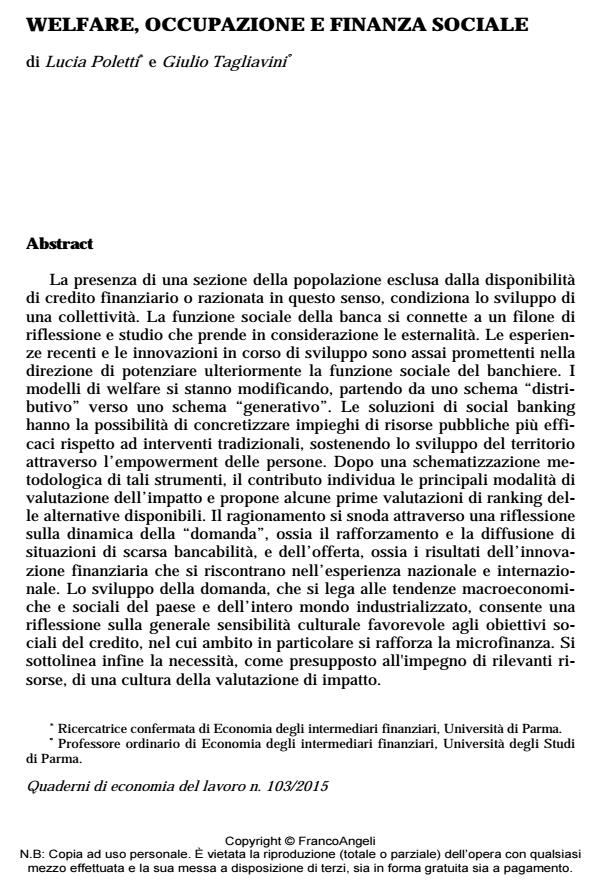Welfare, occupazione e finanza sociale
Journal title QUADERNI DI ECONOMIA DEL LAVORO
Author/s Lucia Poletti, Giulio Tagliavini
Publishing Year 2015 Issue 2015/103
Language Italian Pages 23 P. 261-283 File size 79 KB
DOI 10.3280/QUA2015-103012
DOI is like a bar code for intellectual property: to have more infomation
click here
Below, you can see the article first page
If you want to buy this article in PDF format, you can do it, following the instructions to buy download credits

FrancoAngeli is member of Publishers International Linking Association, Inc (PILA), a not-for-profit association which run the CrossRef service enabling links to and from online scholarly content.
That a share of population can be partially or totally excluded from the access to credit affects the development of a community. The social role of bankers is part of a research field that takes into account the externalities of banking activities. Recent experiences and developing innovations are very useful in further strengthening the social role of the banker. Welfare models are changing, from a distribution scheme to a "generative" scheme. Social banking can lead to a more effective use of public resources compared to traditional operating schemes, supporting local development through the empowerment of individuals. We provide a schematic description of such methodological tools and related impact assessment methodologies, with a tentative ranking of the different alternatives. We present a reflection on the demand side, strengthened by the general decline observed in debtors’ creditworthiness over the last years, and on the supply side, with reference to the financial innovation developed in the national and international experience. We reflect on the general positive cultural attitude, also in industrialized countries, towards the aims of social credit, and microcredit as special case. Finally, we stress the need for an effective framework for impact analysis as a prerequisite for the investment of public and private resources
Lucia Poletti, Giulio Tagliavini, Welfare, occupazione e finanza sociale in "QUADERNI DI ECONOMIA DEL LAVORO" 103/2015, pp 261-283, DOI: 10.3280/QUA2015-103012